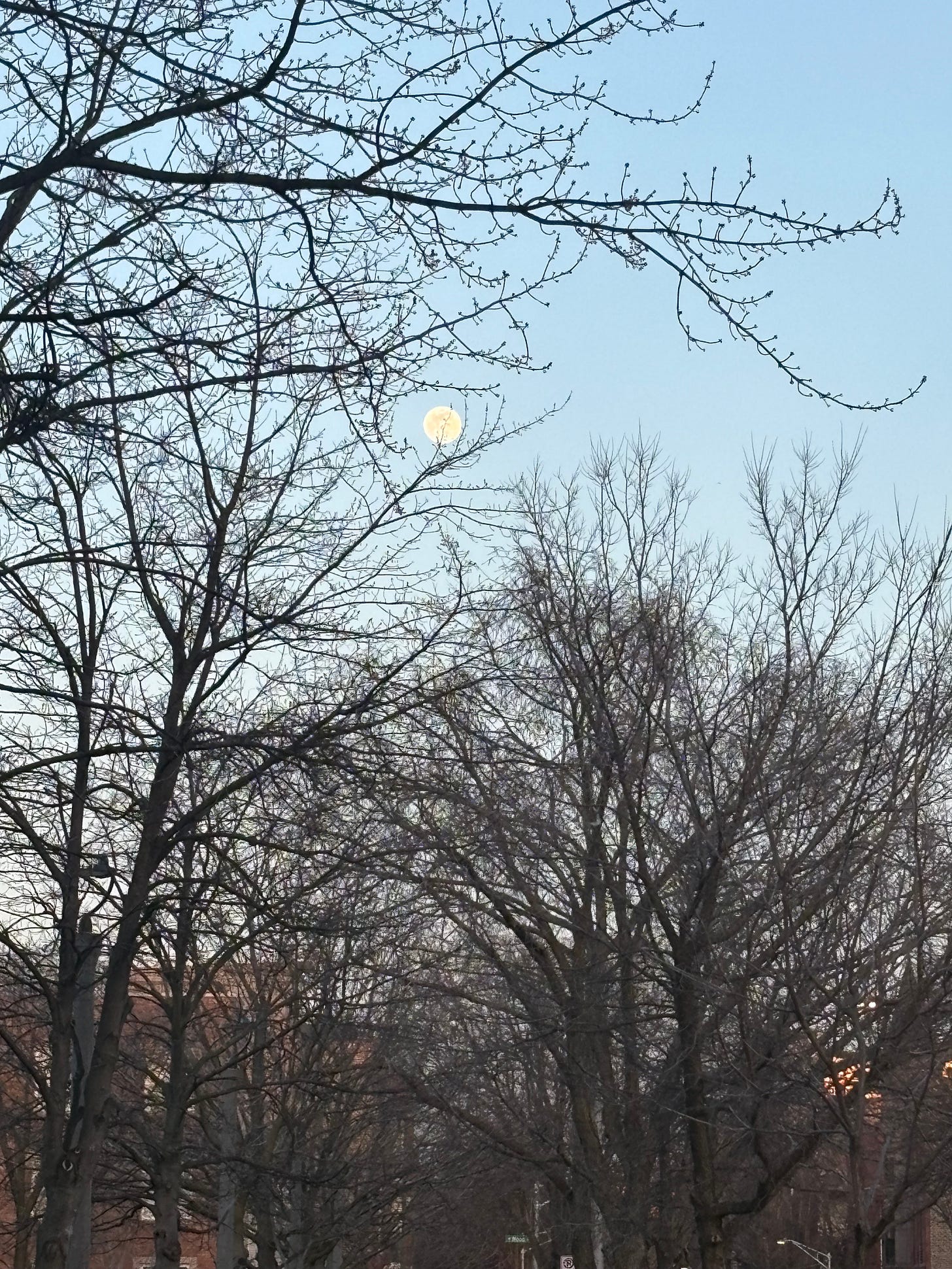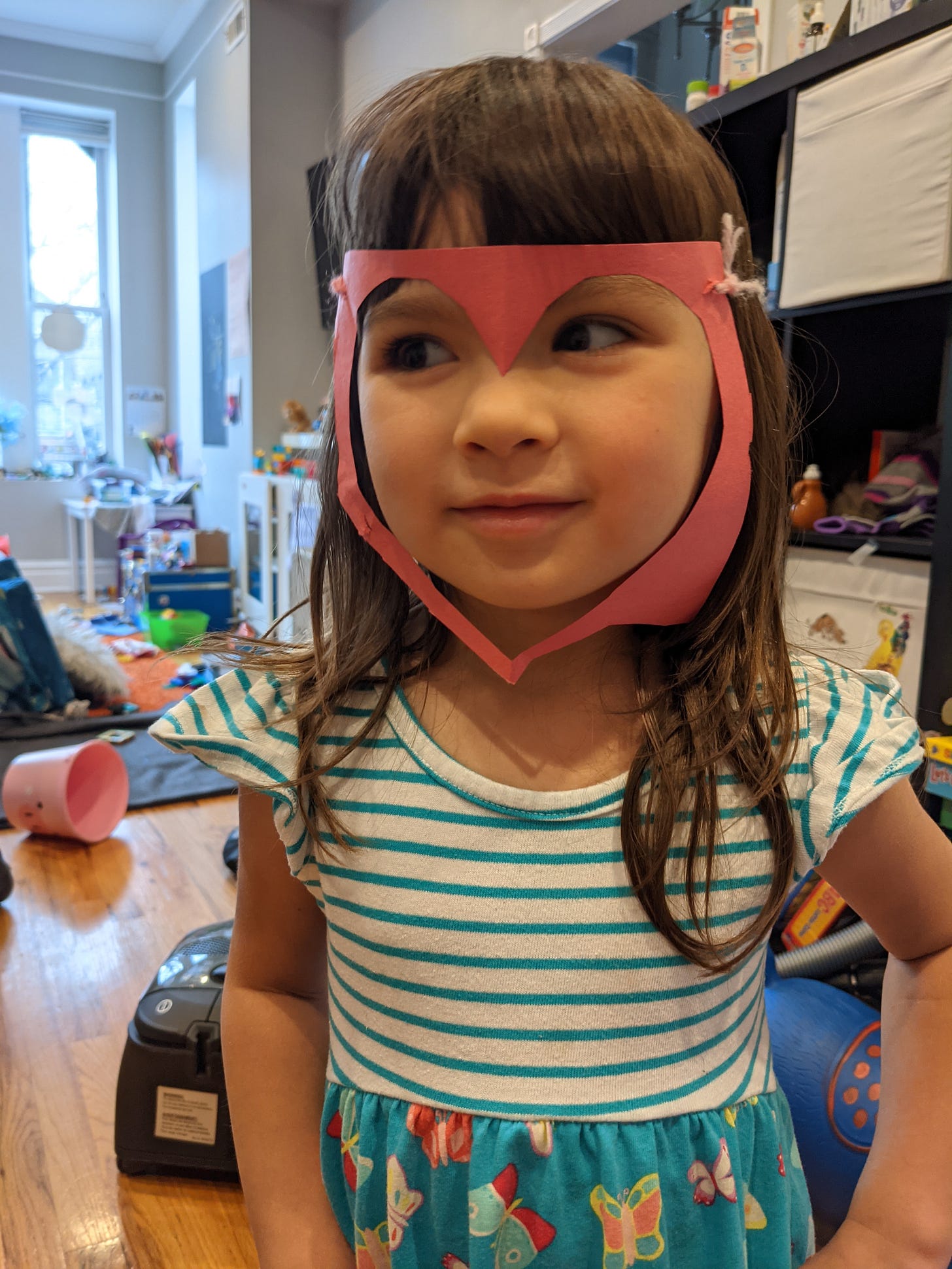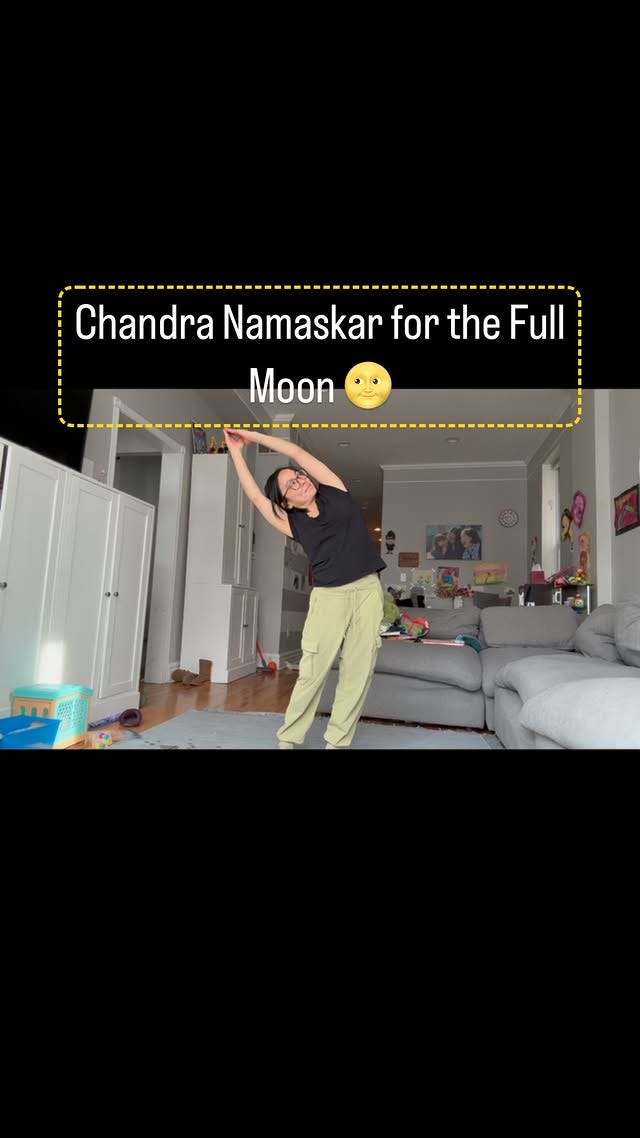full moon in the neighborhood of West Town, Chicago
“(Yoga) Practice becomes firmly grounded when well attended to for a long time, without break and in all earnestness.”
—The Yoga Sutras of Patanjali, translation and commentary by Sri Swami Satchidananda
Women are cyclical
Happy Full Moon, Yoga Mamas! I tend to think of the full moon as a time of celebration and high energy, and here I am at the bleeding phase of my menstrual cycle, feeling low energy and introverted. Nature is cyclical and so are women, and it’s that point where our cycles collide with Hers that we find what we most need from our yoga practices. Here’s an old post I wrote on the topic to help us begin to untangle that.
If we are cyclical, with changing needs and energy levels, how are we to take Patanjali’s advice above and practice yoga for a long time and without a break? I have good news for you: doing yoga can be a form of taking a break, especially when it comes to practices like meditation, yoga nidra, and restorative yoga. It’s relative, of course, because sometimes we need to do something high energy during a break (and what are we taking a break from? Work? Sitting at the computer? Being with the kids?); sometimes, going for a run or doing a few brisk rounds of Surya Namaskar are just what we need.
Our yoga practices won’t look the same every single day and when we really get that, we can practice every day, even when we’re exhausted, menstruating, or sick. It all depends how you define yoga. I’d love to hear your view:
How do you define yoga?
Does your practice shift with your energy levels and phases of your menstrual cycle? Did it shift much after you had kids or went through (peri) menopause?
Recognizing and naming how we feel
If we want to craft a practice on our shifting needs and energy levels, we can begin with pausing to recognize and name how we feel throughout the day. It’s not too hard to recognize if we feel good or bad, but the question is, what type of good or bad? Can we be more specific and develop a language of emotion and sensation?
Just so you know, I have a hard time with this. It takes some practice! But it can also help to have some guidance. In Permission to Feel, Marc Brackett talks about what he has labeled the Mood Meter. It’s a 4-quadrant system that organizes emotions into categories of pleasant to unpleasant, high energy to low energy. For instance, happiness is high on both energy and pleasantness, anger is high on energy and unpleasantness, frustration is high on energy but low on unpleasantness, and depression is low on energy and high on unpleasantness. Check out this chart for more examples.
Another piece to this is noticing the sensations in our bodies. Think of the classic butterflies in the stomach — is it anxiety? Excitement? Anticipation? Sometimes naming an emotion can be surprisingly hard, but noticing the sensations in our body that link us to those hard-to-label feelings can also be helpful. We might not be able to pinpoint our emotions exactly but we can use a tool like the Mood Meter and ask ourselves, “Is this pleasant or unpleasant? Is it high energy or low energy?” And then we go from there to decide what we need.
sometimes a photo like this helps me get into a mindset of love
Practice with love and attention
Once you get an inkling of what you need, go for it! Sometimes we still might not know exactly what we feel or need, and in those cases, begin with small or slow movements. Your body will speak to you and let you know what feels good and what doesn’t. Let go of perfection and self-doubt and just move with a little love and attention. Even if you just stand in Tadasana and sway side to side as your shift your weight from right to left, that’s worth more than doing a whole yoga sequence while you ruminate about your to-do list. It’s really about the quality of attention you bring to your body and mind. Try standing in Tadasana while reading or listening to this beautiful poem about this vital yoga pose by Corie Feiner. Corie truly has a gift for helping us integrate body and mind with poetry:)
Sometimes that love and attention guides us to lie down and practice yoga nidra or sit up on a cushion and breathe for a few minutes. Other times that love and attention asks us to do some playful stretching with our kids or at the park while the kids play on the playground. Get creative and find those little pockets of time to move and breathe in an attitude of self-care. If you do this often, daily if possible, this becomes an act of saluting your True Self.
Chandra Namaskar
As we salute ourselves, we can also salute the things we are part of: Nature and Her cycles. Here’s a lovely, low-key favorite, Chandra Namaskar, a.k.a. Moon Salutations. This is a more gentle approach to movement for those times that you’re not up for Surya Namaskar (Sun Salutations). Here’s a little reel from my IG @urbanyogamama on Chandra Namskar. Enjoy!
Also, I highly recommend checking out Yoga for Women’s Wellbeing by
right here on Substack. Ashley offers yoga classes for each Full Moon!Thanks so much for being here! I hope you got some gems and inspiration from this post. If you loved it, please feel free to share!
another photo of the full moon right here in West Town, Chicago. Sending you all some Urban Yoga Mama vibes from the Windy City!







Love this reminder and encouragement. Usually I want my yoga moment to feel like a moment in perfect peace and I have to try so hard to steal those moments to the point that I go many days without yoga, but really I'm always stretching and moving, got to remember to count those moments too and be easier on myself. BTW amazing pictures 😍
Thank you as always for sharing and recommending my work! I define yoga so broadly, which means I’m practicing every day even if I’m not doing a formal practice. Lately, I’ve been practicing a lot of surrender. Surrender to the natural cycles for sure and it’s hard! But it’s yoga practice not perfect 😀